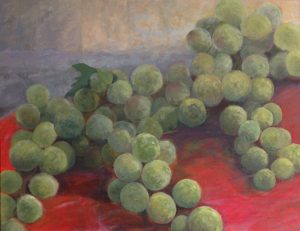 Karyl Innis posted on PRIME WOMEN.com that “Resolutions just suck. Even the word resolution sounds out of it…old… bound by tradition …and in some cases, the word even has a slightly legal twang to it.” She suggests a coaching technique for personal goal setting “The 1, 2, 4, 10 Plan. It’s one you can implement for yourself. The Plan begins with these ideas:
Karyl Innis posted on PRIME WOMEN.com that “Resolutions just suck. Even the word resolution sounds out of it…old… bound by tradition …and in some cases, the word even has a slightly legal twang to it.” She suggests a coaching technique for personal goal setting “The 1, 2, 4, 10 Plan. It’s one you can implement for yourself. The Plan begins with these ideas:- Goals need to be manageable and concrete and public
- Improvement requires a vivid, step by step path forward.
- Questions: Ask yourself these 2 questions one at a time.
- What do I want to do better this quarter?
- What do I want to be different this quarter from last quarter?”
See more about Karyl’s advice at https://primewomen.com/2015/01/resolutions-really/
Building on Ms. Innis’ approach, let’s apply these ideas to art, painting and drawing. Using a quick brainstorming technique, jot down your thoughts about learning more, practicing painting and drawing, seeing art for inspiration in museums, galleries and “getting out there” in the market place by participating in shows, exhibits and social media. Your ideas could be small bites of progress, like one grape at a time. After a year of effort, you will have a bunch of progress! Organize and prioritize the list so the most significant impact ideas are on top. It’s easy to come up with ideas; however, the trick is to prioritize and rank them, and then focus your execution.
Local universities are a target rich environment for artists. I use art classes at Brookhaven College, Southern Methodist University (Dallas and Taos), various workshops and community studio opportunities to learn more from instructors and peers. Seeing masters’ and professional art work is critical; I jot down museum and gallery visits on my calendar and make it fun by attending with friends. Priortize the most notable art museum in your area and when you travel, add an extra day for museum visits. Make plans for an art museum destination vacation with artist friends. Then, there is my own work in the studio which I block out calendar time for, mostly during daylight hours so that I get good light for painting.
Segueing from my corporate work habits, the calendar is my best friend for assigning time to my priorities in art, just as in business. I save the documenting of art work, planning and social media blogging time, including my website maintenance and updates, to evenings when I am not in the studio. “Ten minutes a day” mantra for sketching is on my list this year to build a daily habit.
Karyl also suggests sharing your list with a trusted advisor. Consider hiring a trusted instructor of art that you have good personal chemistry with, is someone you respect and is a good teacher. I hired a former teacher. We meet once a month in my studio for a critique of my current art work, a discussion about studio practice and methods and conclude our dialogue with a ranking of the most critical things to do in the next month and next quarter. Together we identify the top item in each category that we both agree is seriously important. We keep the list small, short and concise. The risk here is to over-identify how much I can get done. My focus on priorities during the quarter is the key to getting things done with thoughtfulness. The accountability and respect for her ideas makes our check-ins a pleasure when I report my progress.
It’s not too late to get started. You too can be even more creative and artistic this year than last. You have all of my best wishes for a successful 2015.
